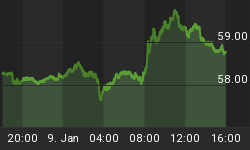With the US stock market's recent volatility, many investors may be wondering whether or not we are headed for another 2008-style crash where the market drops 30 to 40 percent within a few short weeks. Sensing that timing could be critical, many investors may be sitting on the sidelines waiting for a good entry point. But this dynamic misses that far bigger picture: Notwithstanding the bull and bear cycle over the past decade, the entire market has been slowly sinking. As a result, a well timed entry into US stocks may not be enough to deliver long term results.
The majority of investors who have been holding US stocks for the better part of a decade have seen their real wealth diminished. And even if the market does not collapse as it did in late 2008, US stock investors will likely continue to bleed away real wealth for the foreseeable future, as the dollar itself continues to shed value. As we dismantle our economy piece-by-piece, through seemingly unending bailouts and stimulus, real wealth - and real stock prices - will continue to flow abroad.

![]() Larger Image - Source: Yahoo Finance. S&P 500 from August
Larger Image - Source: Yahoo Finance. S&P 500 from August
To see this big picture, we must look back to August 2000. At that point the tech stock bubble had just started to pop, but its effects had not yet been felt in the wider economy. That month, with investors still flush with the optimism of the late 1990's, the S&P 500 Index hit an all-time high of 1,4611*. At the time, the cheerleaders predicted that the United States would lead the free world into a 21st century capitalist dream, with a perpetually growing economy and permanently rising stock prices.
But then something funny happened on the way to the mall. For the next eleven years, US stocks went nowhere. While there was indeed much volatility in the decade (such as the crash of 2008, and the ensuing two-year rally that restored stock prices to their pre-crash levels), long term stock market returns were essentially non-existent. By May of this year the S&P 500 was at 1,3381, about 8% below its nominal value in August 2000. While an 8% decline is no victory, it is not quite a tragedy either. The problem, however, is that these seemingly mild declines are greatly magnified by the falling dollar.
Using 2011 dollars as a yardstick, the August 2000 S&P 500 high would not have been 1,4611, but actually 1,9521. If adjusted for this inflation, the S&P 500 fell an astonishing 31% to May 2011. In other words, investors have lost nearly one-third of their real wealth since 2000. These losses did not only occur in the 2008 crash, as many market cheerleaders insist. They came cut-by-cut, over the past eleven years.
It is this expression of wealth - where a 31% loss of real wealth is represented as a more benign 8% loss of wealth - that is not recognized. The Federal Reserve can pump liquidity into the markets, causing nominal stock prices to rise, yet ignoring the lost purchasing power.
It is worth noting that all of the inflation numbers that Dr. Shiller used to calculate real stock values are based on US CPI as currently calculated by official sources. However, throughout the 1980s and 1990s, the US government made significant changes to the way CPI is calculated. These changes had the cumulative effect of dramatically reducing the rate of reported inflation. If CPI had been instead measured using the formula in use prior to 1980, inflation would have averaged at least 6% annually from 2000-2011. If these measurement techniques had been held in place, investor losses of real wealth to inflation would have been higher during this period.
The moribund market seems to have reduced confidence in the time tested "buy and hold" strategy. Instead investors hoping to actually make money may now be choosing risky market timing strategies or loading up on particular companies or sectors that they hope will outperform. Certainly, some have been successful. But a larger number are likely on the losing end of those trades. But a falling equities market is a drag on the overall economy beyond Wall Street.
Looking ahead, if there is a repeat of the 2008 crash, Ben Bernanke himself has indicated that the Fed will rush in and pump the markets up again with liquidity2. And, as they did in 2008, stock prices may once again rise to their pre-crash levels. But when the dust settles, investors may see another large bite taken out of their portfolios as a result of high inflation.
So let the cheerleaders soft pedal the dips, celebrate the rallies. At the end of the day, the US market appears to be just chasing its tail. However, we believe the buy and hold strategy is still in effect in many world markets, where robust real gains have been delivered over the past decade.
Reference: http://www.econ.yale.edu/~shiller/data.htm
* In order to provide a data series that may be used in conjunction with US CPI data, Dr. Shiller uses average values for each month of his S&P 500 data.
For full access to the remaining articles in The Euro Pacific Global Investor Newsletter, please click here to subscribe.
For an even more in depth look at the prospects of international currencies, download Peter Schiff's and Axel Merk's Five Favorite Currencies for the Next Five Years.
Be sure to pick up a copy of Peter Schiff's just-releasedeconomic fable, How an Economy Grows and Why It Crashes. Clickhere to learn more and order.















